Overview of PHMC
Public Health Management Corporation (PHMC) is a nonprofit public health institute that builds healthier communities through partnerships with government, foundations, businesses and community-based organizations. Since 2008, PHMC has served as the administrative entity for the Out of School Time System funded by the City of Philadelphia Department of Human Services (the OST System). As administrative entity, PHMC provides contract and fiscal oversight, program quality supports, and data management on behalf of DHS. Below is an infographic overview of the OST System and PHMC’s role with the OST System, as well as a narrative outlining program quality supports and assessment approaches.
The OST System
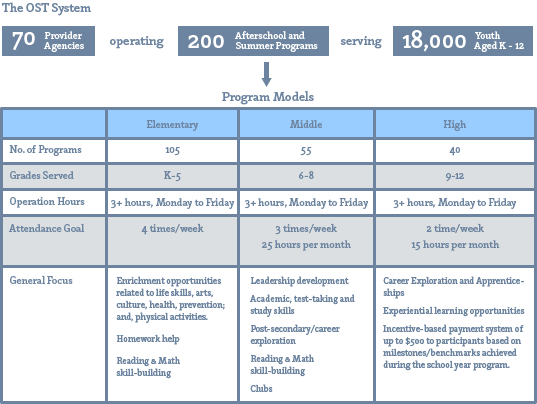
Youth Goals & Outcomes Framework for OST System
Following an extensive process of meetings with providers, a review of best practices and areas of focus, DHS established the following goals, outcomes, and indicators for the OST System. In an effort to focus the outcomes by model, primary and secondary focus areas were determined.
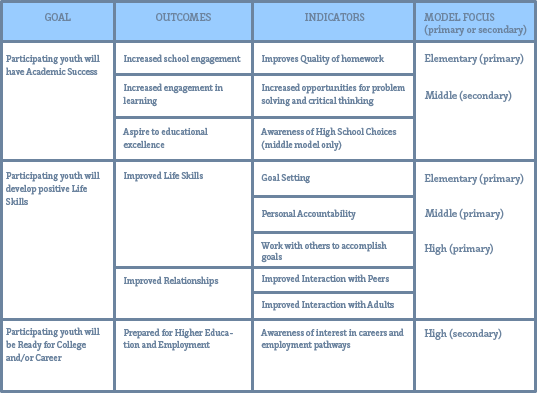
Standards, Activities, and Learning Approach
OST programs operate according to the Core Standards for Philadelphia’s Youth Development Programs as well as the Healthy Living Guidelines. Program activities are implemented using specific learning approaches designed to engage youth and facilitate youth outcomes.
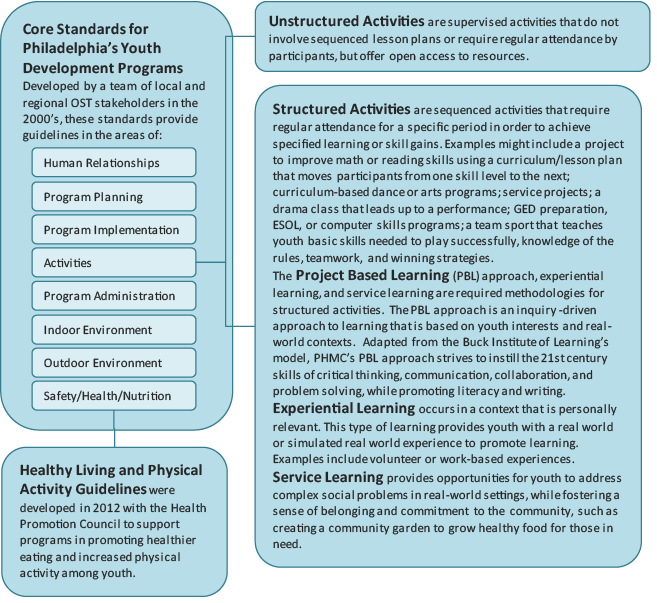
PHMC OST Team and Roles
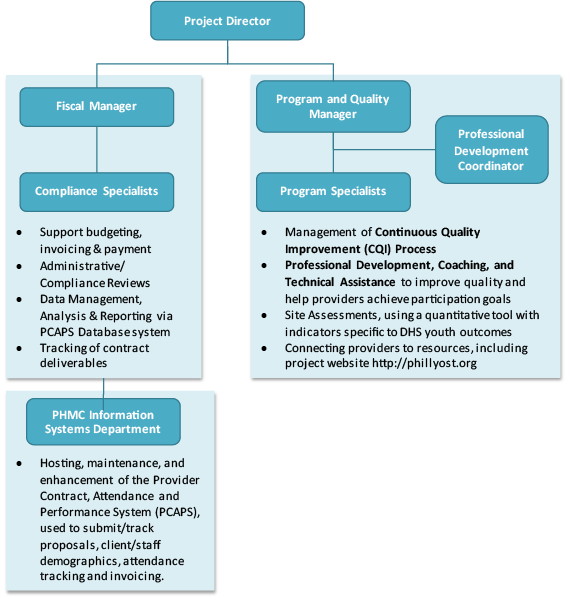
Continuous Quality Improvement (CQI) Process
PHMC’s approach to the CQI process ensures a collaborative course between PHMC and providers in understanding program strengths and areas for improvement.
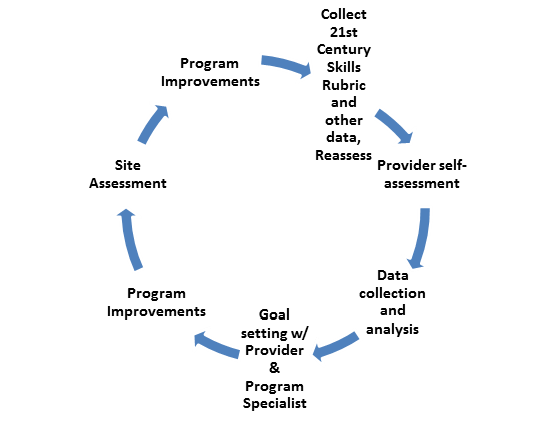
Professional Development, Coaching, and Technical Assistance
PHMC’s Coaching, Technical Assistance, and Professional Development involves providing workshops, roundtables, individual or group coaching, peer learning communities, and resource sharing.
- Professional development workshops may be in person or online and target specific areas of need as identified via the PSAYDN Self-Assessment tool or goal setting meetings. Since FY 2011, PHMC has provided close to 300 workshops to OST provider staff.
- Roundtables are facilitated meetings presenting topical research based information; they include small group discussions around the topic to facilitate peer learning. Held quarterly and targeted by program model, roundtables provide a more intimate setting for discussion, information sharing, and networking.
- Individual coaching is one-on-one support from a Program Specialist focused on an area targeted for quality improvement. Coaching is collaborative and primarily provider-driven. In some cases, where a group of providers has a similar need, a group coaching model is used.
- Peer Learning Communities are provider-driven, multi-session, small group sessions focused on an area of interest or a common area targeted for quality improvement. Program Specialists and/or providers may facilitate the sessions together.
- Resource sharing may include providing information on useful websites, providing templates, sample schedules, or activity ideas.
Quality Improvement Tools
Provider Self-Assessment
A key element of the OST CQI process is to offer providers the opportunity to critically reflect on their programs and areas of need. The Pennsylvania Statewide Afterschool and Youth Development Network (PSAYDN) Self-Assessment is a programmatic tool allowing program staff to assess themselves and their programs across multiple topic areas, ranging from Program Structure and Management, Youth Relationships, Activities, and Safety and Health. Providers complete the PSAYDN tool twice per year, early in the school year and again at the end of the school year. Program Specialists guide each site through this process and work with the data to further support programs. PHMC views this practice as a method of enhancing targeted technical assistance, as well as continuing to be provider centered in offering timely technical assistance and longer-term program support.
Goal-Setting Form
The next critical piece of the CQI process is to create goals and improvement plans based on identified needs. PHMC Program Specialists review and analyze PSAYDN results with providers to help prioritize, develop and refine goals for each program. Together, they complete a Goal-Setting Form that includes two to three broader goals, as well as concrete, short-term, achievable action steps for each. Professional Development, Roundtables, Group and Individual Coaching are offered to support programs in their progress toward achieving their goals. Additionally, Program Specialists support and monitor progress toward goals through ongoing communication and scored site visits.
Site Visit Assessment Tool
The final tool used to inform and monitor the CQI process is the Site Visit Assessment Tool, which is completed once or twice annually. The Site Visit Assessment tool allows Program Specialists to conduct a formal site visit and assess programs across the following areas: Activities, Program Implementation, Agency and Student Relationships, and Agency Operations. In addition to this tool being a formal program monitoring tool, it is also used to suggest areas for quality improvement.
21st Century Skills Rubric
Lastly, in an effort to target and measure student impact, providers complete a 21st Century Skills Rubric for all youth who participate in structured activities following the end of each activity cycle; generally cycles last from 3-10 weeks depending on the age group of the youth served. These data assess youth skills in the areas of Goal Setting, Collaboration, Communication, Critical Thinking and Problem Solving, and Active Learning and Engagement. Individual student progress is measured along a continuum that includes the following levels: emerging, proficient, mastery, and breakthrough. Using this tool, providers can assess and monitor the skills acquisition of each youth as they complete their projects throughout the year. In addition to student assessment, the tool also helps providers deliberately structure activities with the development of critical 21st Century skills in mind.
Conclusion
By creating an approach that incorporates clear goals and targeted outcomes, combined with a structured system of feedback and professional development designed to achieve them, DHS and PHMC have partnered to ensure that the OST system is one that consistently pursues continuous quality improvement and student success.


